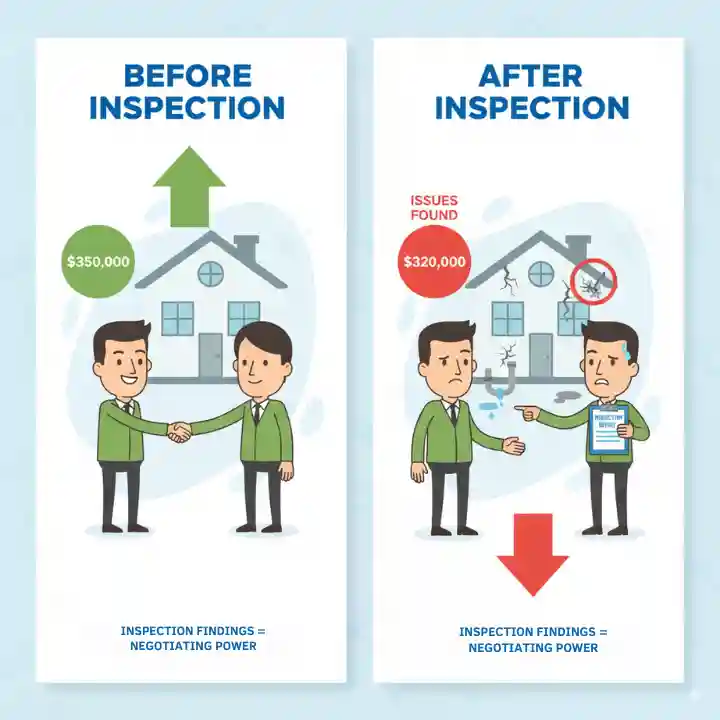What to do to avoid snoring – Complete Guide
Have you ever woken up in the middle of the night to the sound of your own snoring? Or perhaps been woken by your partner nudging your ribs, asking you to “turn over”?
Avoiding snoring is a challenge that affects millions of people worldwide. Fortunately, there are effective solutions that can help you achieve quieter nights and restorative sleep.
In this guide, we will explore everything you need to know about what to do to avoid snoring – from simple lifestyle changes to modern technologies that can transform your nights. 🌙
CHOOSE YOUR BEST OPTION:
If you’ve tried various things and still haven’t figured out how to stop snoring, read this complete guide because here you might find some tips on what to do to not snore every night.
If you don’t know how to avoid snoring, you might find the solution in one of the tips you’ll see in this article later, but keep in mind that any treatment to stop snoring should always be guided by a professional.
Devices to not snore promise to provide an answer to this problem, but be aware that they need to be recommended by a qualified doctor or therapist.
And if you find an anti-snoring device you’d like to try, it’s worth consulting the manufacturer and especially qualified professionals who can recommend the right device for your personal case.
For example, anti-snoring nasal strips are the most well-known and popular devices, can be easily found, but perhaps they were not effective for your specific case.
There are also many other devices that you may not yet know about, such as the anti-snoring pillow, some recent novelties like the anti-snoring mouthpiece, or even exercises to stop snoring – which you will see here soon.
Understanding Snoring
Before discovering how to avoid snoring, we need to understand what causes this nightly noise. Snoring happens when airflow encounters resistance as it passes through the throat and nose during sleep.
When the soft tissues at the back of the throat relax, they can vibrate as air passes, creating that characteristic sound we all know.
Why do we snore?
- Anatomy of the mouth and throat: Some people have a longer soft palate or a larger uvula (that “little bell” at the back of the throat), which can narrow the airways.
- Nasal congestion: Colds, allergies, or a deviated septum can make it difficult to breathe through the nose.
- Excess weight: Extra fatty tissue around the neck can press on the airways.
- Age: As we get older, muscle tone decreases, including in the throat muscles.
- Alcohol or sedative consumption: These substances relax the throat muscles.
- Sleeping position: Sleeping on your back facilitates snoring.
Is your snoring normal or concerning?
Not all snoring is the same. Can you identify which category yours falls into?
| Type of Snoring | Characteristics |
|---|---|
| Occasional snoring | Happens only when you have a cold or are very tired |
| Positional snoring | Occurs only when sleeping in certain positions |
| Constant snoring | Happens every night, regardless of position |
| Snoring with breathing pauses | Snoring is interrupted by periods of silence followed by gasps or snorts |
Attention: The last type deserves special attention, as it may indicate sleep apnea, a serious condition that requires medical follow-up. If you have identified this pattern, it is important to consult a specialist.
Snoring Risk Calculator
Simple Lifestyle Changes to Reduce Snoring
The good news is that we can often avoid snoring with simple adjustments to our daily routine. Let’s explore the most effective strategies:
Change your sleeping position
Did you know that simply changing the position you sleep in can significantly reduce snoring?
Sleeping on your side is one of the most effective ways to avoid snoring. When we sleep on our back, the tongue and soft palate tend to fall back, partially narrowing the airways.
| Sleeping Position | Impact on Snoring and Tips |
|---|---|
| On your back (supine) |
Higher probability of snoring. The tongue falls back and gravity presses on the airways. Tip: Avoid this position by placing a pillow behind your back. |
| On your side (lateral) |
Ideal position to reduce snoring. Keeps the airways more open. Tip: Use a pillow between your knees for more comfort in this position. |
| On your stomach (prone) |
May reduce snoring, but can cause neck and back pain. Tip: Use a thin pillow to reduce neck strain. |
If you have difficulty maintaining a side position during sleep, there are some techniques that can help:
- Use a body pillow that supports your back
- Sew a tennis ball to the back of your pajamas (this will make you turn to your side when you try to roll onto your back)
- There are specific positioning devices to prevent you from sleeping on your back
Control your weight
If you are overweight, losing a few pounds can make a big difference. Excess fatty tissue around the neck can press on your airways, contributing to snoring.
One study showed that people who lost just 10% of their total weight significantly reduced the frequency and intensity of their snoring. A radical transformation is not necessary – small, consistent changes in diet and physical activity can already bring results.
Stay hydrated
Dehydration causes secretions in the nose and soft palate to become thicker and stickier. This can obstruct the airways and intensify snoring. Drinking enough water throughout the day helps keep these secretions more fluid.
Aim to consume at least 2 liters of water per day. However, avoid drinking large amounts of liquids right before bed, as this can lead to sleep interruptions to go to the bathroom.
Avoid alcohol and sedatives before bed
Alcohol and sedative medications relax the throat muscles, increasing the likelihood of snoring. Even if you don’t normally snore, you may start to do so after consuming these substances.
Try to avoid alcohol at least 3 hours before sleeping. If you take sedative medications, talk to your doctor about the possibility of adjusting the time or dosage.
Establish a regular sleep routine
Sleep deprivation can excessively relax the throat muscles when we finally get to sleep. Establishing regular times to sleep and wake up can help avoid snoring.
Adults should aim to sleep 7 to 9 hours per night. Try to go to bed and wake up at the same time every day, even on weekends.

Exercises to Strengthen Throat Muscles
Just as we strengthen the muscles of the body with exercises, we can also strengthen the throat muscles to reduce snoring. This approach, known as myofunctional therapy, has shown surprising results in scientific studies.
Daily exercises to reduce snoring
Dedicate 5-10 minutes a day to these simple exercises:

1. Tongue exercise
Push the tip of your tongue against the roof of your mouth and slide it backwards. Repeat 20 times.
Benefit: Strengthens the tongue muscles and helps prevent it from falling back during sleep.

2. Tongue suction
Press your entire tongue against the roof of your mouth, creating a vacuum. Hold for 5 seconds. Repeat 10 times.
Benefit: Tones the tongue and soft palate muscles.

3. Soft palate elevation
Pronounce the vowel “A” in an exaggerated way for 20 seconds.
Benefit: Strengthens the soft palate, reducing its tendency to vibrate.

4. Contraction of the back of the throat
Looking in a mirror, open your mouth and say “Ah” trying to lift the uvula (the “little bell”) without moving your tongue. Repeat 10 times.
Benefit: Strengthens the muscles of the uvula and the back of the throat.
These exercises strengthen the muscles that normally relax during sleep, contributing to snoring. Research shows that after three months of consistent practice, many people can significantly reduce the intensity of snoring.
Breathing exercises
Improper breathing can contribute to snoring. Practicing breathing techniques can help improve airflow:
- Diaphragmatic breathing: Lie on your back with one hand on your chest and the other on your abdomen. Inhale slowly through your nose, feeling your abdomen expand (not your chest). Exhale slowly through your mouth. Practice for 5 minutes before bed.
- Alternate nostril breathing: A yoga technique called “Nadi Shodhana” that helps clear the nasal passages and improve airflow.
Anti-Snoring Devices and Products
For those looking for more immediate solutions on what to do to avoid snoring, anti-snoring devices can be an excellent option. There are several alternatives available on the market:
Nasal strips and dilators
These small adhesive strips or plastic devices help keep the nasal passages open during sleep. They are particularly useful for people whose snoring is caused by nasal congestion or narrowing of the nostrils.
How they work:
The adhesive strips are applied to the outside of the nose and exert a force that opens the nostrils. The internal dilators are inserted inside the nostrils to physically keep them open.
Efficacy:
Studies show a reduction in snoring in 50-75% of users, especially in those with nasal congestion. They are most effective for light to moderate snoring.
Mouth guards and mandibular advancement devices
These devices are worn in the mouth during sleep and work by positioning the jaw and tongue in a way that keeps the airways more open.
How they work:
The device subtly moves the lower jaw forward, preventing the tongue from falling back and partially blocking the throat.
Efficacy:
These devices can reduce snoring in up to 80% of cases, being one of the most effective solutions available without a prescription.
Anti-snoring pillows
Pillows specially designed to avoid snoring help position the head and neck in a way that maximizes airflow.
How they work:
These pillows have an ergonomic design that keeps the head slightly elevated and aligned with the spine, reducing pressure on the airways.
Efficacy:
The effectiveness varies greatly depending on the cause of snoring, but studies show benefits for positional snoring (those that occur only in certain sleeping positions).
| Device | Best for |
|---|---|
| Nasal strips | Snoring caused by nasal problems, allergies, colds |
| Mouthpieces | Snoring caused by tongue and jaw position |
| Anti-snoring pillows | Positional snoring, cervical alignment problems |
| Mandibular advancement devices | Mild sleep apnea and moderate to severe snoring |
Medical Approaches for Persistent Snoring
When lifestyle changes and over-the-counter devices are not enough to avoid snoring, it’s time to consider medical options:
When to consult a doctor
It is important to seek medical guidance if:
- Your snoring is loud and disturbs the sleep of others
- You wake up gasping or short of breath
- You have breathing pauses during sleep (observed by another person)
- You feel excessively sleepy during the day, even after a full night’s sleep
- You have frequent morning headaches
- Your snoring started suddenly after the age of 50
These can be signs of sleep apnea or other medical problems that require proper treatment.
Exams and diagnoses
The doctor may recommend a sleep study (polysomnography), which monitors various body functions during sleep, including:
- Breathing patterns
- Blood oxygen levels
- Body movements
- Brain waves
- Heartbeats
This exam can be performed in a sleep lab or, in some cases, at home with portable equipment.
Medical treatments
Depending on the diagnosis, your doctor may recommend:
CPAP (Continuous Positive Airway Pressure):
A machine that delivers pressurized air through a mask, keeping the airways open. This is the standard treatment for moderate to severe sleep apnea.
Prescribed oral devices:
Similar to over-the-counter devices, but custom-made by specialized dentists for greater effectiveness and comfort.
Surgical procedures:
In specific cases, interventions such as:
- Uvulopalatopharyngoplasty (UPPP): removes excess tissue from the throat
- Somnoplasty: uses radiofrequency to reduce and stiffen the soft palate
- Palatal implants: inserts small rods that stiffen the soft palate, reducing vibration
Technology at the Service of Silent Sleep
Modern technology offers new solutions for those looking for what to do to avoid snoring. Let’s get to know some options:
Dormus App Analysis
Dormus
App for sleep improvement
Dormus is an app designed to help improve sleep, mainly focused on the sleep of babies and children, but with features that can help the whole family.
Key features:
- Personalized Dormus method adapted to specific needs
- Real-time advice on what is happening and how to react
- Hyper-personalized sleep plans based on daily routine
- Help with night weaning
- Wiki with content based on scientific evidence
- Graphs with sleep history to identify patterns
Advantages:
Disadvantages:
How to incorporate into an anti-snoring plan:
Although Dormus is more focused on infant sleep, its principles of sleep hygiene and pattern monitoring can help adults identify factors that contribute to snoring. Using the app to establish a healthy sleep routine and record factors that worsen or improve snoring can be valuable for developing personalized strategies.
Other anti-snoring apps and technological devices
Snoring monitoring apps:
These apps use the smartphone’s microphone to record and analyze your snores during the night. They can provide information about the intensity, duration, and patterns of snoring, helping to identify triggers and monitor the effectiveness of interventions.
“Smart” devices:
Smart pillows and beds that automatically adjust the head’s position when they detect snoring, usually by slightly elevating the headboard to improve airflow.
Anti-snoring wearables:
Small devices that you wear on your body during sleep and that vibrate gently when they detect snoring, encouraging you to change position without fully waking up.
The Relational Aspect of Snoring
Snoring not only affects the person who snores, but also their partner. Let’s address this often-neglected aspect:
How to talk about snoring with your partner
If you are the person who snores:
- Acknowledge the impact your snoring has on your partner’s sleep
- Don’t take it personally or feel ashamed
- Show willingness to seek solutions
- Ask for support and patience during the treatment process
If your partner snores:
- Approach the topic with empathy, not as an accusation
- Focus on the facts and how snoring affects your sleep
- Offer to help find solutions
- Acknowledge your partner’s efforts to improve
“Snoring is a medical condition, not an annoying habit or character flaw. Approaching the problem as a health challenge you can solve together helps maintain respect and affection in the relationship.”
Strategies for those who sleep with someone who snores
While your partner works on avoiding snoring, there are measures that can help you sleep better:
- Use quality earplugs
- Consider a “white noise” device to mask the sound
- Go to bed before your partner to fall asleep first
- Establish an agreement to gently wake your partner when the snoring gets too loud
When to consider sleeping in separate rooms
In some cases, sleeping in separate rooms can be the best solution to preserve the sleep health of both. This does not mean problems in the relationship – on the contrary, it can strengthen the relationship by ensuring both are rested and in a good mood.
If you opt for this solution:
- Establish intimacy rituals before separating to sleep
- Meet in the morning for a moment of connection
- Remember that this is a practical solution, not an emotional distancing
- Consider this a temporary measure while working on solutions for snoring
Conclusion: Your Action Plan to Avoid Snoring
We’ve reached the end of this complete guide on what to do to avoid snoring. Let’s summarize the main strategies in an action plan you can start implementing today:
Checklist for snore-free nights:
- Sleep on your side
- Stay hydrated
- Avoid alcohol before bed
- Establish regular sleep schedules
- Try nasal strips
- Evaluate if a mouthpiece can help
- Invest in a suitable pillow
- Try the Dormus app to improve your sleep habits
- Consider a monitoring device to track your progress
- Snoring persists despite interventions
- There are symptoms of sleep apnea
- Snoring starts suddenly after age 50
Remember that avoiding snoring usually requires a combination of strategies and some persistence. The results may not be immediate, but every small improvement contributes to quieter nights and more refreshing days.
The important thing is not to give up! Start with small changes and gradually add new strategies to your plan. With patience and consistency, you can achieve quieter nights and much more restorative sleep – for you and for those who sleep beside you. 🌟





